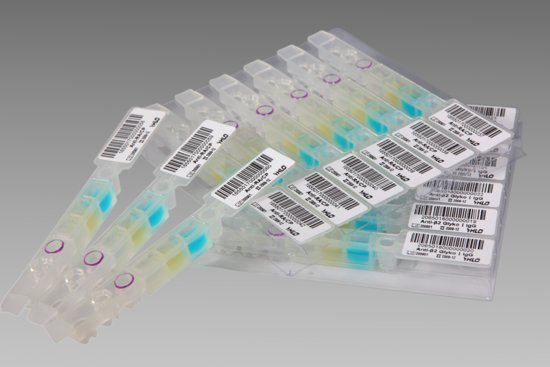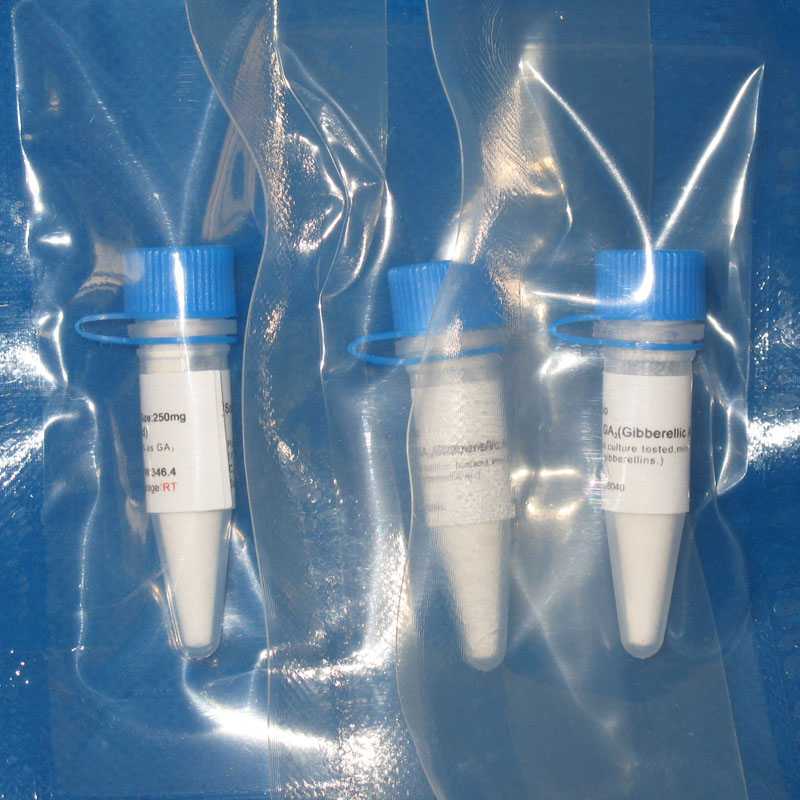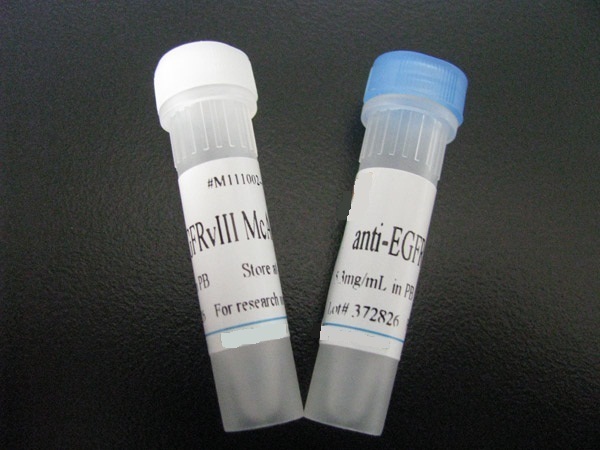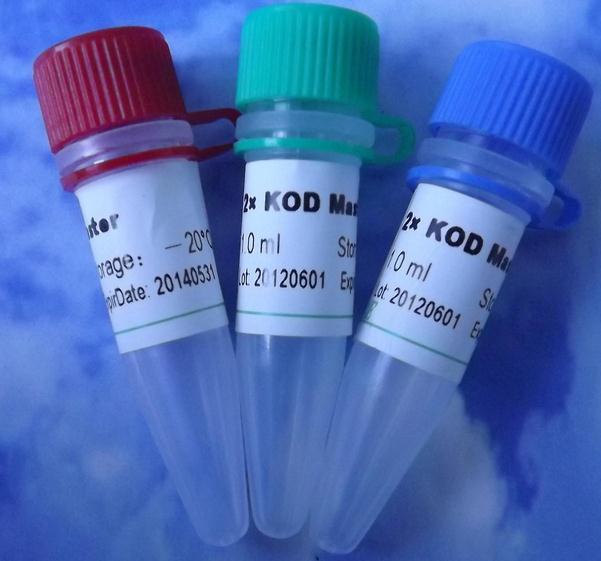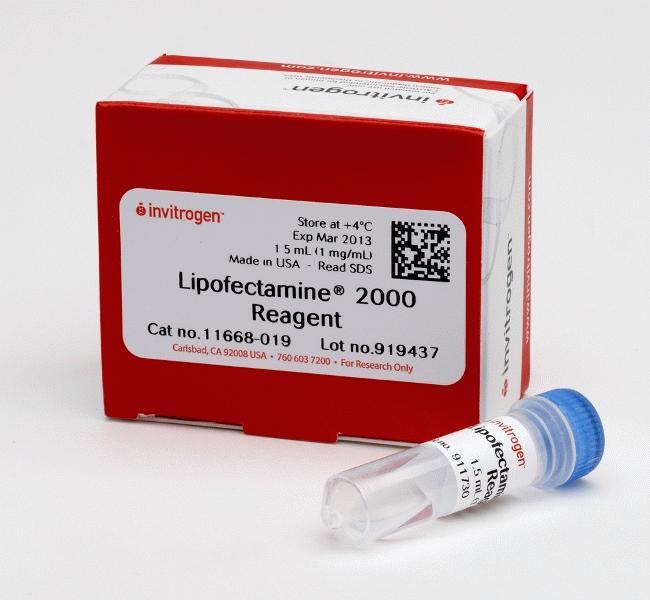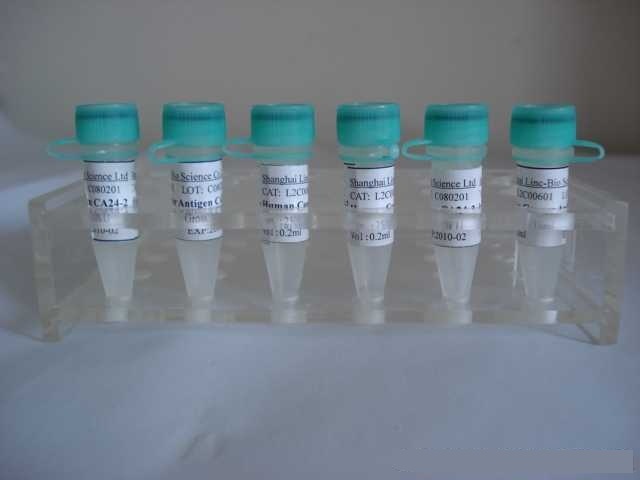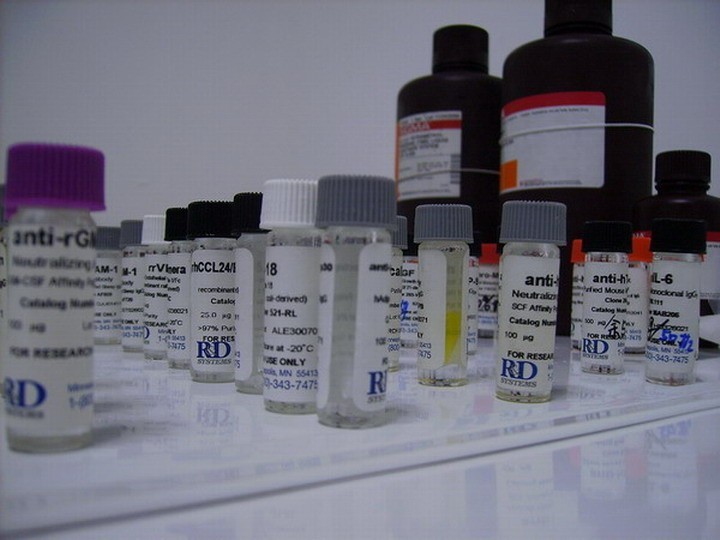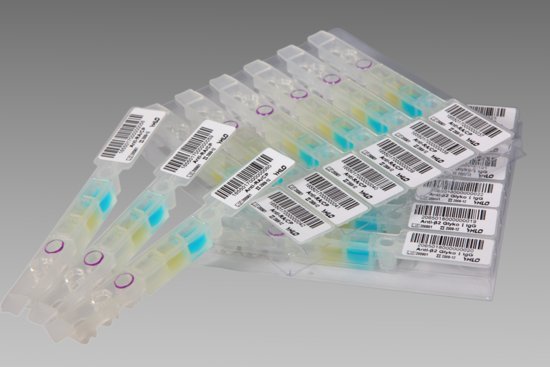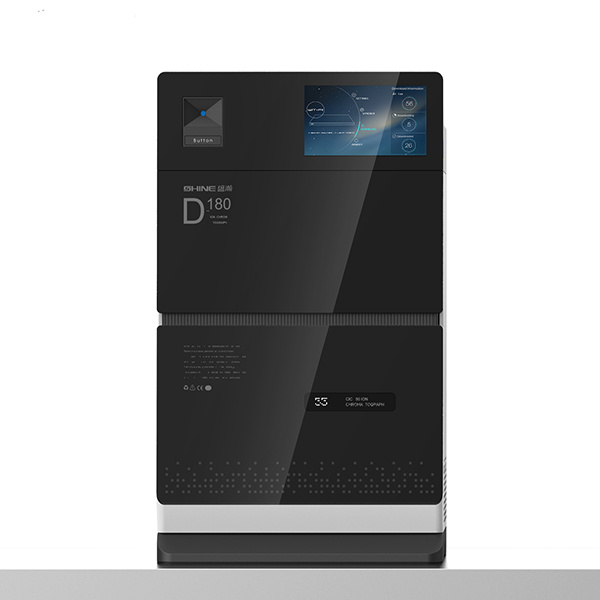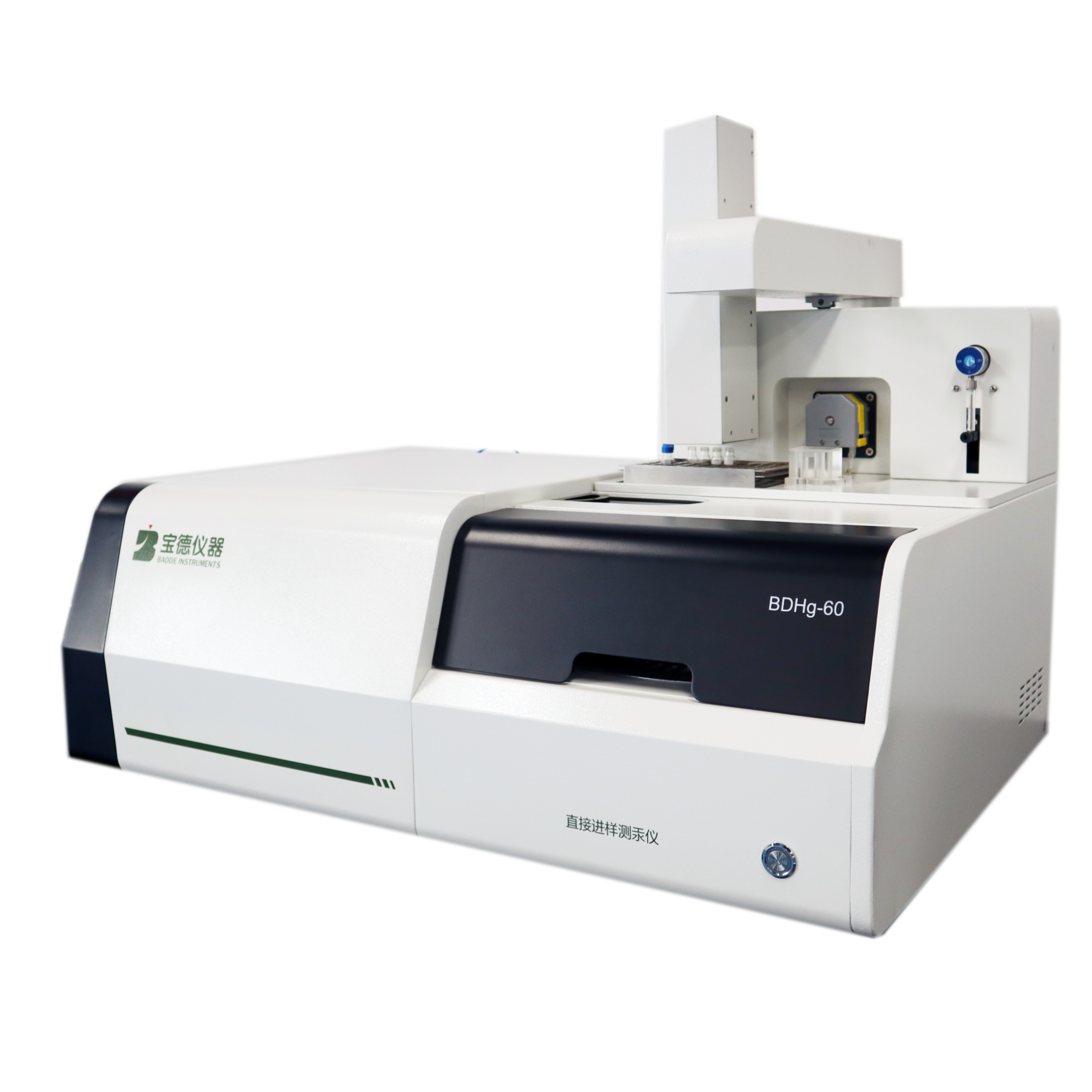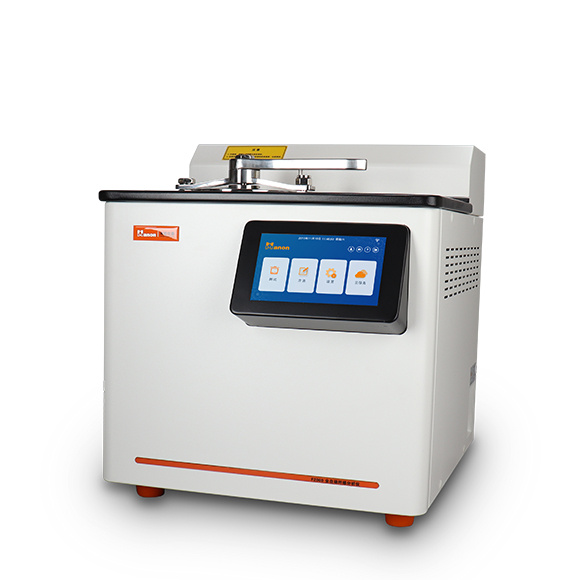英文名称 Anti-Ankyrin G
中文名称 锚定蛋白G抗体
别 名 ANK-3; ANK3; ANK3_HUMAN; ankyrin 3 (G); Ankyrin 3, node of Ranvier (ankyrin G); Ankyrin 3, node of Ranvier; Ankyrin G119; Ankyrin-3; Ankyrin-G; brain specific ankyrin G; CHANK3.
浓 度 1mg/1ml
规 格 0.2ml/200μg
抗体来源 Rabbit
克隆类型 polyclonal
交叉反应 Human, Mouse, Rat, Dog, Pig, Cow, Horse, Rabbit
产品类型 一抗
锚定蛋白G抗体研究领域 神经生物学 信号转导 细胞粘附分子 细胞骨架
蛋白分子量 predicted molecular weight: 481/220kDa
性 状 Lyophilized or Liquid
免 疫 原 KLH conjugated synthetic peptide derived from human Ankyrin G C-terminus
亚 型 IgG
纯化方法 affinity purified by Protein A
储 存 液 0.01M PBS, pH 7.4 with 10 mg/ml BSA and 0.1% Sodium azide
产品应用 ELISA=1:500-1000 IHC-P=1:100-500 IHC-F=1:100-500 IF=1:100-500
(石蜡切片需做抗原修复)
not yet tested in other applications.
optimal dilutions/concentrations should be determined by the end user.
保存条件 Store at -20 °C for one year. Avoid repeated freeze/thaw cycles. The lyophilized antibody is stable at room temperature for at least one month and for greater than a year when kept at -20°C. When reconstituted in sterile pH 7.4 0.01M PBS or diluent of antibody the antibody is stable for at least two weeks at 2-4 °C.
Important Note This product as supplied is intended for research use only, not for use in human, therapeutic or diagnostic applications.
锚定蛋白G抗体产品介绍 human: Ankyrins are a family of proteins that are believed to link the integral membrane proteins to the underlying spectrin-actin cytoskeleton and play key roles in activities such as cell motility, activation, proliferation, contact, and the maintenance of specialized membrane domains. Multiple isoforms of ankyrin with different affinities for various target proteins are expressed in a tissue-specific, developmentally regulated manner. Most ankyrins are typically composed of three structural domains: an amino-terminal domain containing multiple ankyrin repeats; a central region with a highly conserved spectrin binding domain; and a carboxy-terminal regulatory domain which is the least conserved and subject to variation. Ankyrin 3 is an immunologically distinct gene product from ankyrins 1 and 2, and was originally found at the axonal initial segment and nodes of Ranvier of neurons in the central and peripheral nervous systems. Alternatively spliced variants may be expressed in other tissues. Although multiple transcript variants encoding several different isoforms have been found for this gene, the full-length nature of only two have been characterized. [provided by RefSeq]
mouse: This gene encodes a member of the ankyrin protein family. Ankyrins link integral membrane proteins to the spectrin-based Ankyrins link integral membrane proteins to the spectrin-based cytoskeleton. Ankyrin family members share a protein structure which includes three independently folded domains: the N-terminal ankyrin repeat domain, the central spectrin-binding domain, and the C-terminal rod domain. This ankyrin functions as the major ankyrin in the kidney and may play a role in the polarized distribution of many integral membrane proteins to specific subcellular sites. Alternative splicing of this gene results in multiple transcript variants encoding different isoforms.
Function : In skeletal muscle, required for costamere localization of DMD and betaDAG1 (By similarity). Membrane-cytoskeleton linker. May participate in the maintenance/targeting of ion channels and cell adhesion molecules at the nodes of Ranvier and axonal initial segments.
Subunit : Directly interacts with DMD and betaDAG1. This interaction does not interfere with binding between DMD and betaDAG1. It is also required for DMD and betaDAG1 retention at costameres (By similarity). Interacts (via N-terminal ANK repeats) with SCHIP1 isoform 5 (via C-terminus); this interaction is required for the localization at axon initial segments (AISs) and nodes of Ranvier (NRs) (By similarity). May be a constituent of a neurofascin/NRCAM/ankyrin G complex. Interacts with RHBG.
Subcellular Location : Cytoplasm, cytoskeleton. Cell junction, synapse, postsynaptic cell membrane (By similarity). Lysosome (By similarity). Note=In skeletal muscle, localized at costameres and neuromuscular junctions (By similarity). In macrophages, associated with lysosomes (By similarity).
Tissue Specificity : Expressed in brain, neurons and other tissues.
DISEASE : Note=Genetic variations in ANK3 are associated with autism spectrum disorders susceptibility.
Similarity : Contains 23 ANK repeats.
Contains 1 death domain.
Contains 2 ZU5 domains.
Database links : UniProtKB/Swiss-Prot: Q12955.3
抗体应在(-20℃)中冷冻干燥或浓缩的液体形式,直到需要,避免反复冷冻/解冻周期,降低抗体含量和浓度。相反,冻结在单次使用的等分试样重组抗体或添加防冻剂(甘油或乙二醇),从而使料液可以保持在-20℃下为液体形式,以使移液没有“解冻”。
![]()



